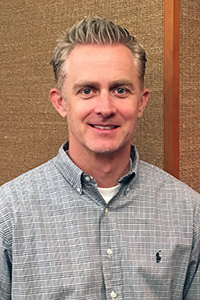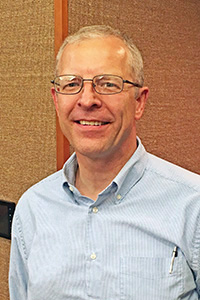You’re accessing archived content
This is archived content from the UIT website. Information may be outdated, and links may no longer function. Please contact stratcomm@it.utah.edu if you have any questions about archived content.
For Quality Assurance and Engineering, collaboration is key

Jason Moeller, USS
associate director
for Engineering
By Jesse Drake
Quick – think of a product that was developed without software. Not so easy, is it?
Software has become crucial to nearly every product we use, and with new software releases daily, developers are under mounting pressure to deliver products quickly.
Fueled by these expectations, software has emerged as proving ground for product management, where the philosophies that govern a product’s development change as often as the products themselves.
"The end goal of integrating many of our processes is to mature the software development lifecycle," said Jason Moeller, associate director for Engineering in University Support Services (USS).
One way USS is doing that is transitioning away from the “waterfall” approach, in which developers would bundle all of the requirements and build a piece of software over months or even years.
In the real world, what a customer requires evolves over time. Long lead times and excluding customers from the process often led software development and QA teams to deliver something that the customer didn't ultimately want.
"These days, we don't just include customers in the process, we help them define their needs," said Dan Thornley, associate director of Quality Assurance (QA) in USS. "It's an adjustment for them, too. They became accustomed to saying, 'I don't have to think this through, I'll just tell them what I want.' We all have to be more focused."
USS has embraced Agile development, a more iterative process in which projects are broken down and reviewed daily to keep developers on track. The requirements and solution are allowed to evolve through continuous collaboration, which in turn accelerates the time to release, better aligns the product to customer needs, and decreases costs.
On the heels of a training workshop for UIT product managers led by software development consultant Jeff Patton, the new watchword is collaboration.

Dan Thornley,
USS associate director
of Quality Assurance
"It's a much more collective effort than it used to be," Thornley said. "Because we want more and better testing, we're trying to leverage everybody on the team. Today, the team on a project includes product managers, engineers, QA, user interface people, and end users."
To some degree, collaboration is a function of limited resources.
"QA simply doesn't have the staff or bandwidth to test as adequately as we might like to, so in the new environment we have to say, 'Hey, we can't get all these tests done. Who on the team can help out?'"
Moeller agreed.
"In order to deal with resource constraints, you have to come up with cross-functional roles," he said. "Anyone can help out on any one task."
USS is also integrating the Patton recommendation to spend more time validating a project in the early stages.
"[Jeff] Patton put forth the concept that we should try to prototype and validate up front, before we pump in all the money," Thornley said. "Better to spend $10,000 early on to find out if we want to complete it, than spend $400,000 and wonder why we did it at all.
Node 4
Our monthly newsletter includes news from UIT and other campus/ University of Utah Health IT organizations, features about UIT employees, IT governance news, and various announcements and updates.
